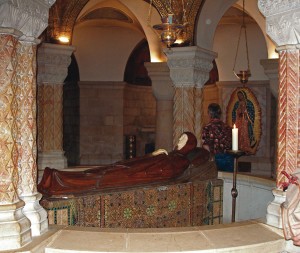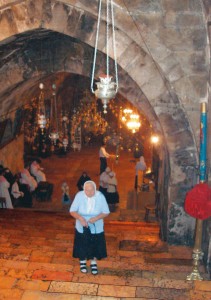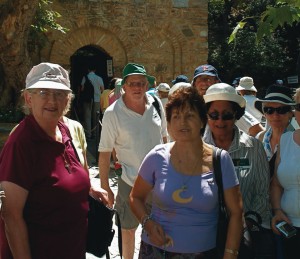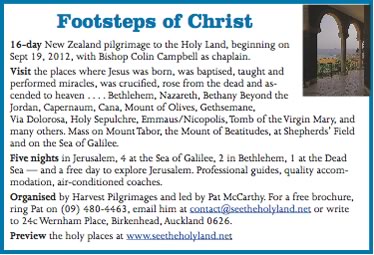The Tradition of Mary’s Death
One of the apparent mysteries of the early Church is what happened to the Virgin Mary at the end of her life on earth.
The New Testament is silent on the matter. The last we hear of Mary is immediately after her Son’s Ascension into heaven, when the apostles returned to the Upper Room.
According to Acts 1:14, “With one heart all these joined constantly in prayer, together with some women, including Mary the mother of Jesus, and with his brothers.”
The tradition of the early Church, however, is clear. Several written sources describe Mary’s death and burial in Jerusalem, where two churches are believed to mark the places where she died and where she was buried.
According to biblical scholar Fr Lino Cignelli, OFM, all of these sources “are traceable back to a single primitive document, a Judaeo-Christian prototype, clearly written within the mother church of Jerusalem some time during the second century, and, in all probability, composed for liturgical use right at the Tomb of Our Lady.
“From the earliest times, tradition has assigned the authorship of the prototype to one Lucius Carinus, said to have been a disciple and fellow labourer with St John the evangelist.”
One of these documents, called Transitus Mariae, is attributed to St John himself. In it the evangelist tells of being “snatched up by a cloud” from Ephesus so he could be with Mary on her deathbed.
Similarly, the other apostles were “assembled by a whirlwind” from wherever they were — Peter from Rome, Thomas from India, Mark from Alexandria — to be present when Jesus “received her holy and blameless soul”.
The Transitus Mariae and similar documents are not accepted by the Church as part of the canon of Scripture. But, says the Catholic Encyclopedia, they “have a real value, reflecting as they do the tradition of the early centuries”.
In line with this tradition, the Church of the Dormition commemorates the death of Mary. A fortress-like building beside a tall bell tower, this Benedictine church dominates Mount Zion, the highest point in ancient Jerusalem.
In the centre of its softly-lit crypt, under a rotunda, stands a simple bier on which lies a life-size statue of Mary, fallen asleep in death. Dormition means “falling asleep”.
Not far away is the Cenacle, believed to be on the site of the Upper Room where the Last Supper took place and where the apostles and Mary prayed following the Ascension.
By the reckoning of the Transitus Mariae, Mary would have been aged no more than 50 at the time of her death.
The Tomb of Mary, at the foot of the Mount of Olives, is an underground shrine in the crypt of the Greek Orthodox Church of the Assumption. A short walk away are the gnarled olive trees of the Garden of Gethsemane.
The tomb is revered by Christians and Muslims alike. On one of our visits we invited our Muslim taxi driver to join us. “Have you been here before?” we asked as we went in. “Only in my dreams,” he replied.
Entry is through the façade of a 12th-century Crusader basilica and down a wide stairway of nearly 50 steps to a gloomy cavern lit by myriad hanging lamps in the Eastern style.
To the right, pilgrims stoop to enter a small edicule (“little house”) and pause at a worn and pitted stone slab behind a glass screen. Here, according to tradition, Mary was laid to rest — and here her body was assumed into heaven.
An alternative claim is made that the Virgin Mary died and was buried in the city of Ephesus, in present-day Turkey. This claim rests on the Gospel account that Jesus entrusted the care of Mary to St John (who later went to Ephesus) and is supported by visions attributed to Blessed Catherine Emmerich.
I have visited the House of the Virgin Mary outside Ephesus and can attest to its spiritual environment. But the earliest Christian traditions all locate the end of Mary’s life in Jerusalem.
The Catholic Encyclopedia, quoting a document from the 2nd century, says St John went to Ephesus “at a very advanced age, i.e. after Mary’s death”. It adds: “There was never any tradition connecting Mary’s death and burial with the city of Ephesus.”
Pat McCarthy, founding editor of NZ Catholic newspaper, now leads pilgrimages and has developed the Seetheholyland.net website. His next Holy Land pilgrimage, in September 2012, will include the Church of the Dormition and the Tomb of Mary.






 Entries(RSS)
Entries(RSS)